Home » Stair Lifts » Stairlift Features
Home » Stair Lifts » Stairlift Features
Most stair lifts offer very similar basic features. There are also optional features and upgrades available for stair lifts.
Travel rail
Stair lifts are installed onto the stairs, not the wall. Your staircase must be structurally sound and safe to accommodate a stair lift. If you have a very narrow stair case, you will want to look for a stair lift that is more compact and protrudes less into the stairs. Remember that you must also be able to seat yourself on the chair and allow enough space for your knees not to touch the wall. If your staircase is 30″ or wider, it should be enough space to install a stair lift.
Foldable
The seat, armrests and footrest fold up to keep the lift out of the way when not in use. Check the comparison chart to find out more about popular models and how much space they take up when folded.
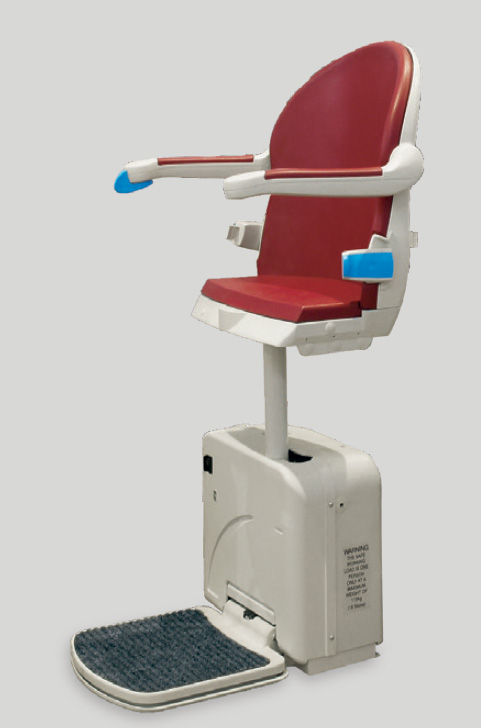
Battery operated with automatic charging
Stair lifts operate on battery power that is plugged into standard household power to constantly charge the system. You will need an electrical outlet nearby the stair lift for power. An outlet can be installed by an electrician if needed. The travel rail contains a charging system that is either a continuous charge line throughout the rail, or charging stations that are located at the top and bottom of the rail. Most stair lifts if left away from the charging station will beep to warn you that they are not charging.
Remote controls
A stair lift should come with a remote control so that you can call the lift when needed. Perhaps you and your husband both use the stair lift. He just took it to the second level and now you’d like to do the same. You can use the remote control to bring the lift to the main level. Remotes may use infrared or radio frequency technology. It’s best to have 2 remote controls and keep one on each level.
Overspeed governor
To prevent a stair lift from moving too fast down the rail on descent, an overspeed governor slows the lift down if needed and keeps the lift operating at a steady and safe speed as it moves down the rail.
Constant pressure operation & emergency stop
Normal operation up and down is done by a button mounted on the chair, usually on the armrest. It must be pressed or held constantly while moving it. This is a safety mechanism. Stair lifts should include an emergency stop button.
Manual lowering
Although a stair lift will usually operate a few runs up and down after a power failure, it’s possible that your stair lift could require manual lowering (such as forgetting to put your stair lift in the charging station, or the battery needs replacement). There is usually a manual lowering procedure for your stairlift that is listed in the owner’s guide.
Mechanism of operation
Most stair lifts use a rack and pinion mechanism to pull the stair lift up and down. This is generally a reliable system that performs for many years. The Handicare 1100 stair lift uses a unique 4-motor friction drive system. One benefit of this is that there is no exposed gear rack – making it easy to clean as well.
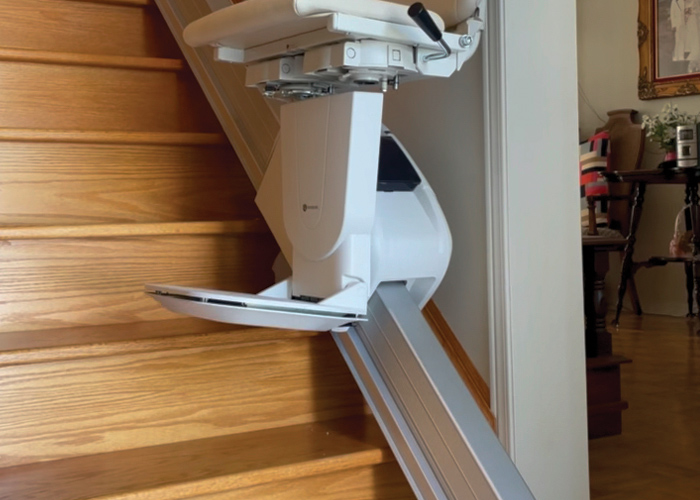
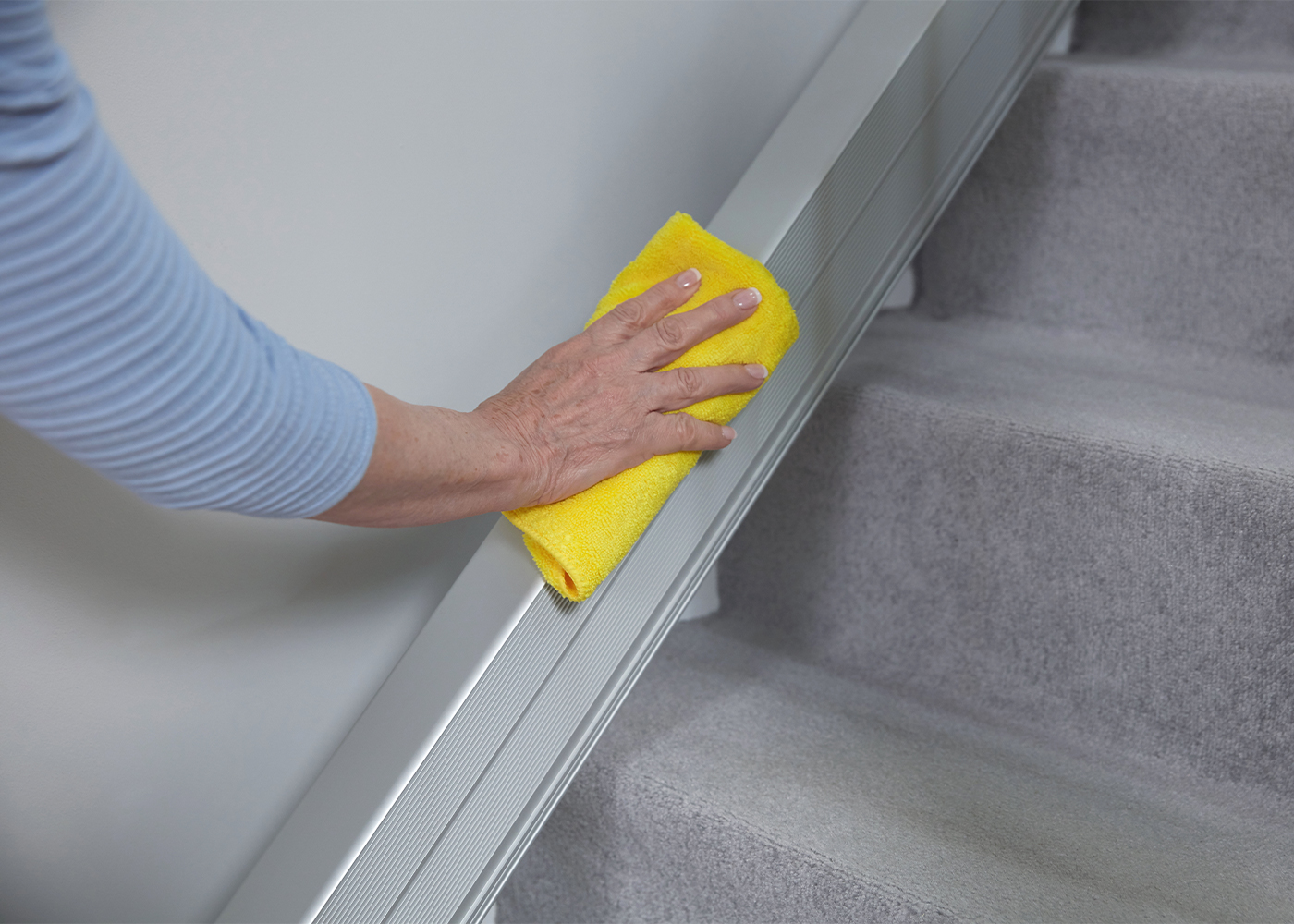
Obstruction sensors
Obstruction sensors will stop the stair lift if it encounters something on the stairs such as shoes, books, laundry etc. Obstruction sensors should be built into the footrest area to ensure that the lift does not run over anything present on the stairs.
Vacation mode
If you plan to be away for a longer period of time, setting your stair lift in “vacation mode” can provide longer life for your battery as it won’t be charged unnecessarily while you are gone.
Seatbelt
A seatbelt should be used when riding the stair lift. A retractable belt is best as it stays out of the way when the stair lift is not in use.
Seat swivel
A stair lift should include a seat swivel lever so the seat can turn almost 90° at the top landing. This allows you to safely deboard, away from the stairs to rise from the seat facing away from the stairs.
Besides the basics, manufacturers offer a variety of optional features and upgrades so that your stair lift offers you more convenience, or fits your staircase better.
Power seat swivel
If you find it difficult to operate a lever and use your body to turn the seat to deboard the lift, you may want to add a power seat swivel that operates with the push of a button to turn the seat.
Power folding footrest
The footrest of a stair lift folds up like the seat does, to stow the chair and make more space on the stair case when you are not using it. If you find it difficult to reach down or to push it up using your foot, consider adding a power folding footrest.
Flip up rail/Slide track
In many homes, there is doorway at the bottom of the stairs. To prevent the rail from intruding into the doorway and posing a tripping hazard, manufacturers offer different options including a “flip up rail”. This may be manually hinged or use a powered hinge. One brand, the Handicare 1100, features a clever “slide track” system. The track retracts automatically as the stair lift moves up the rail and automatically extends when the stair lift descends. These options are available not always available on curved stair lifts, but adding a parking feature can solve this issue with the curved lift.
Reduced intrusion for top landing
A door way may be present at the top landing of the stairs. To reduce the intrusion caused by the top of the rail, there are different solutions offered by manufacturers. One option is the use of inexpensive extension brackets to increase the angle of the rail at the top making it protrude less. Handicare offers an upgraded zero intrusion system whereby the chair is secured on the first top step eliminating any rail overrun at the top of the stairs. These options are available for straight stair lifts. Curved stair lifts have other options available to deal with the top landing doorway.
Weight and capacity
Most of us do not get lighter with age. When you choose a stair lift, be sure to size up a bit on the capacity of the lift. Manufacturers list the capacity of the stair lift and this is based on consistent day-to-day use. If you are sharing the lift, consider the weight of the heavier person in your thinking. Also remember that it is best not to stand on the footrest. There are some stair lifts made for higher weight capacities such as the Savaria K2 plus. See comparison chart for capacities of popular stair lifts.
Seat fitting
Although you do not sit in a stair lift for that long, you will still want to feel comfortable and safely seated. The best test is to try the actual model before you buy it. Some seats are quite straight at the back, while others are open to allow for more girth or usable seat space. Check the position of the footrest so that your feet are not dangling. Can you easily fit in between the arm rests? Some arm rests are width adjustable. Check to see that you can swivel the chair easily.
Seat styles and colors
Some manufacturers offer choices for seat fabric types and colors, but most commonly, stair lifts are available in neutral colors like cream, beige or light gray.
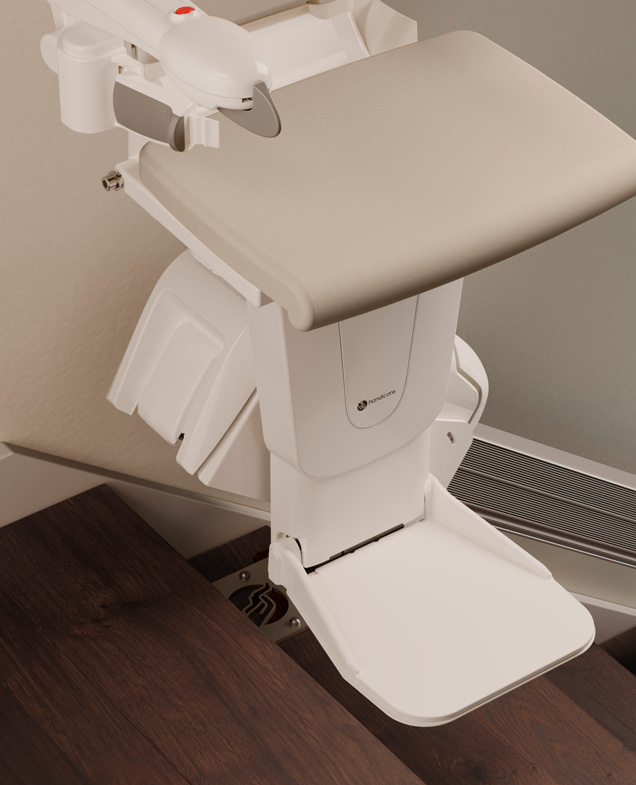
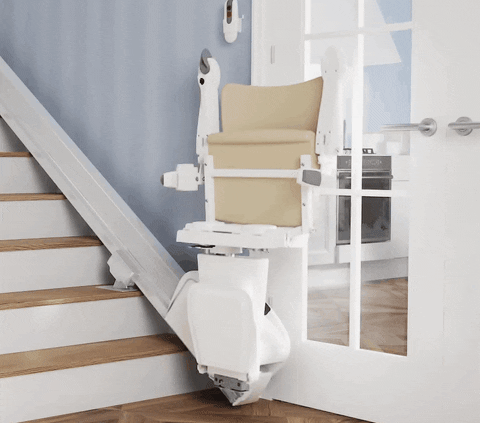
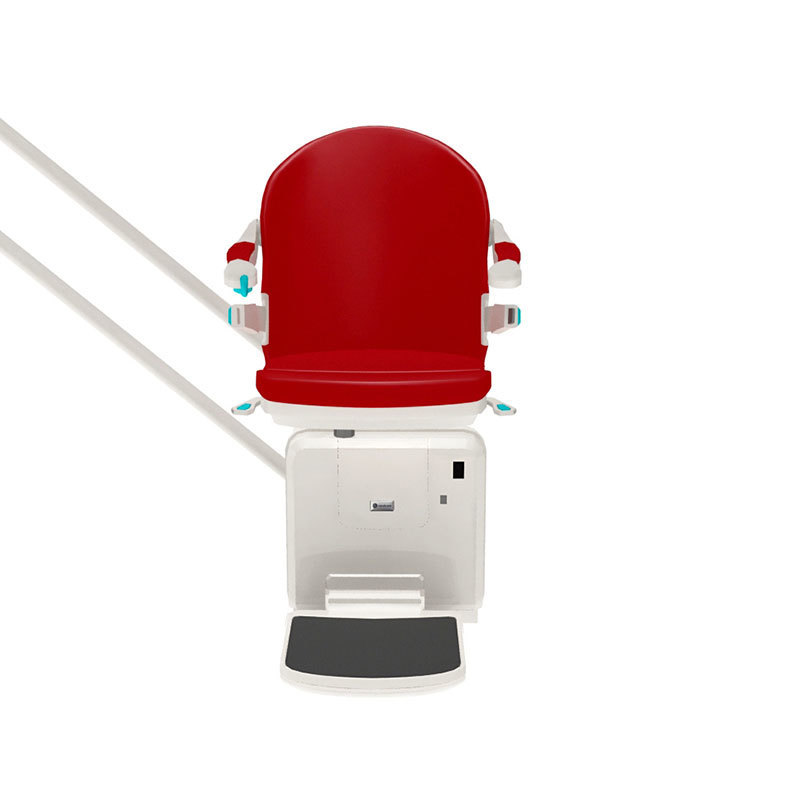
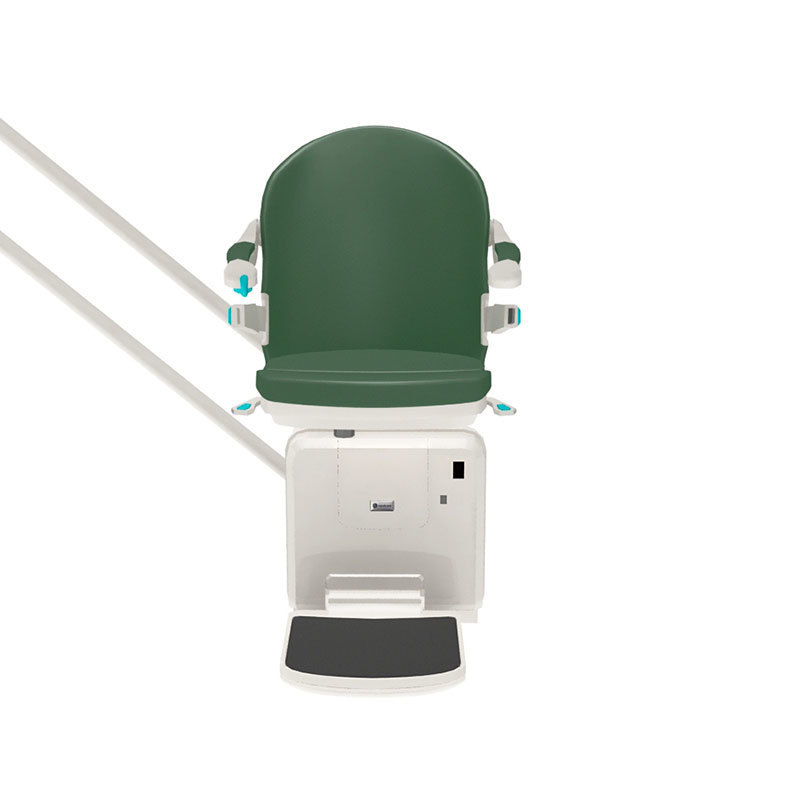
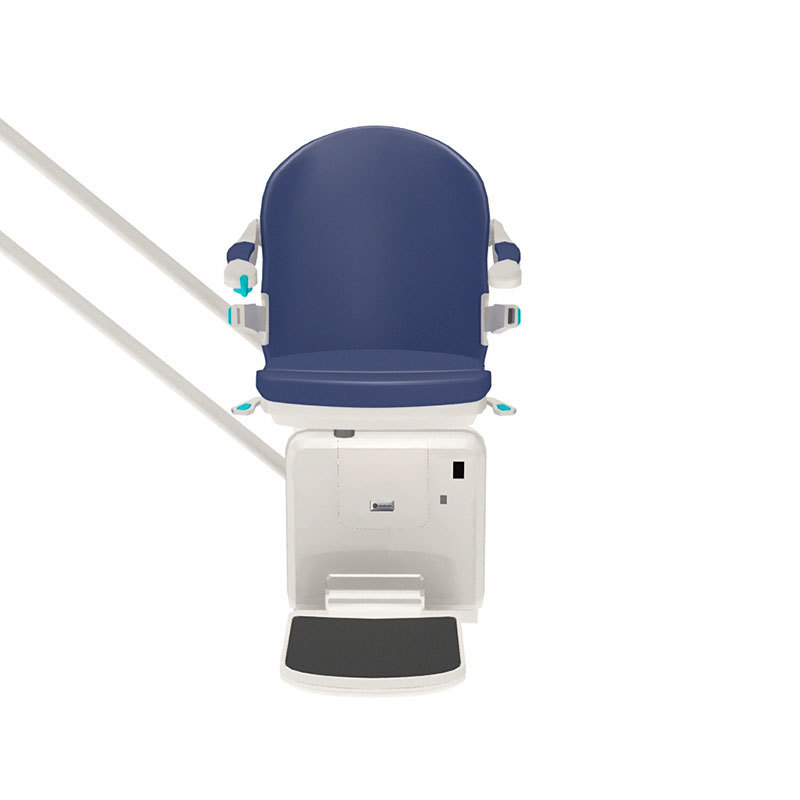
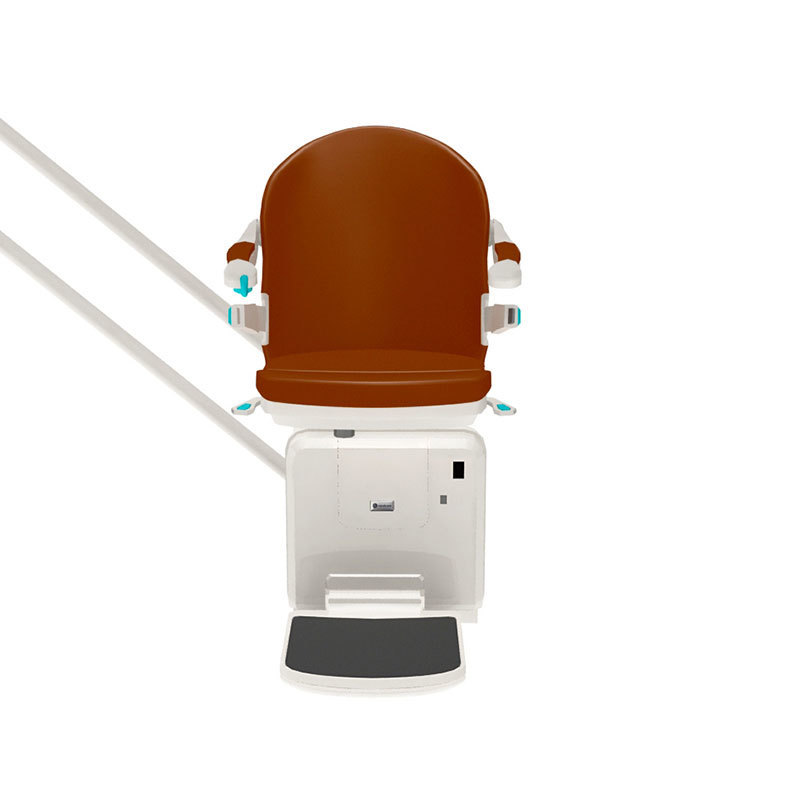
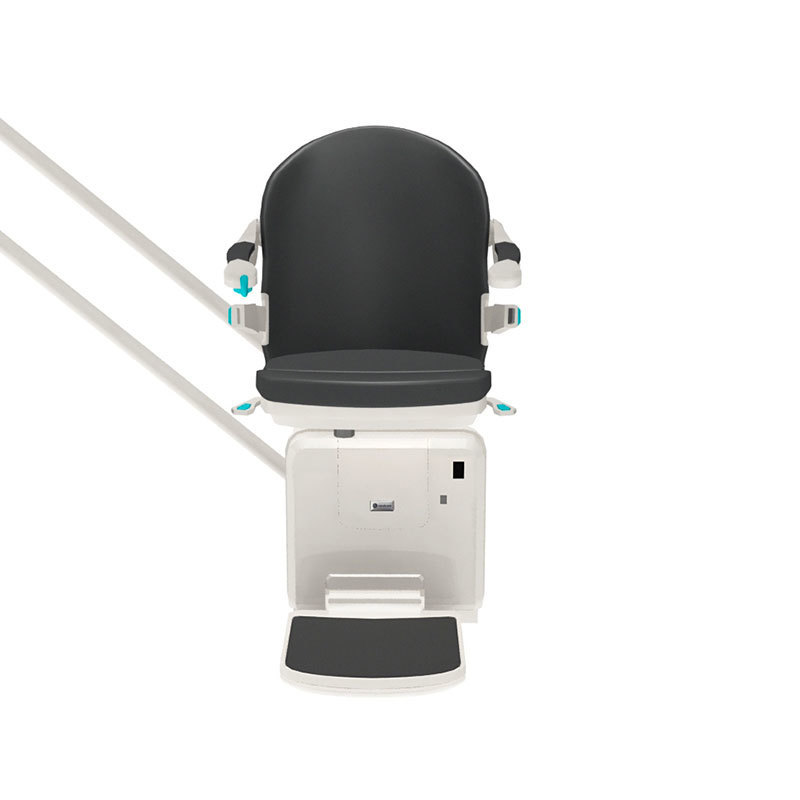
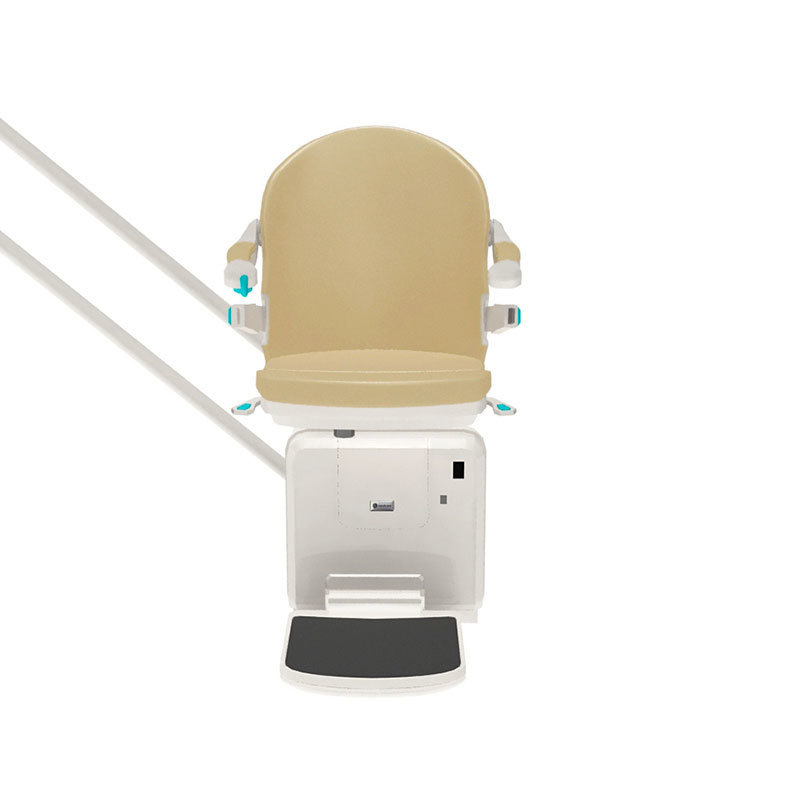
Don’t want beige? At extra cost and lead time, you can order different colors.
Curved stair lifts offer similar features to straight stair lifts, but there are unique features only possible with curved stair lifts.
Parking
One of best features of a curved stair lift is that you can create a “parking station” for the chair. To do this, the rail is bent usually 90° or 180° to travel into an out-of-the way area where it’s easy to get on and off the lift and the chair is completely away from the stairs making it easier to use the stairs as well. Parking can be added at the top, at the bottom or at both landings. Although this option costs more, it’s a popular choice with its added benefits.
Overrun
Rather than parking, an overrun can be added. In some cases, the rail can simply be extended to create an easy on/off area, without adding any turns to it. This is called an overrun and it is less costly than adding a bend in the rail to create parking. An overrun can be added to the top or bottom or both landings.
Drop nose
A simple way to create less intrusion of the lift at the bottom of the stairs is to add “drop nose” rail. This is special bend in the rail to create a steeper curve in the rail at the last step.
Additional stops & charging
Curved stair lifts usually feature charging stations at the top and bottom and landings. Additional charging stations can be added and even allow for a second stop if the stairs service 3 levels.
Custom rail colors
Some manufacturers offer custom paint colors for the rail so that it blends into the stair color or rug color better.
Rail styles
Curved stair lift rails are usually single tube or double tube construction. There is no real difference to the operation of the lift so this is more of a personal style choice. Bruno offers a flatter, taller single rail design as well.
There are other features possible with each manufacturer, please see the comparison chart for additional features.
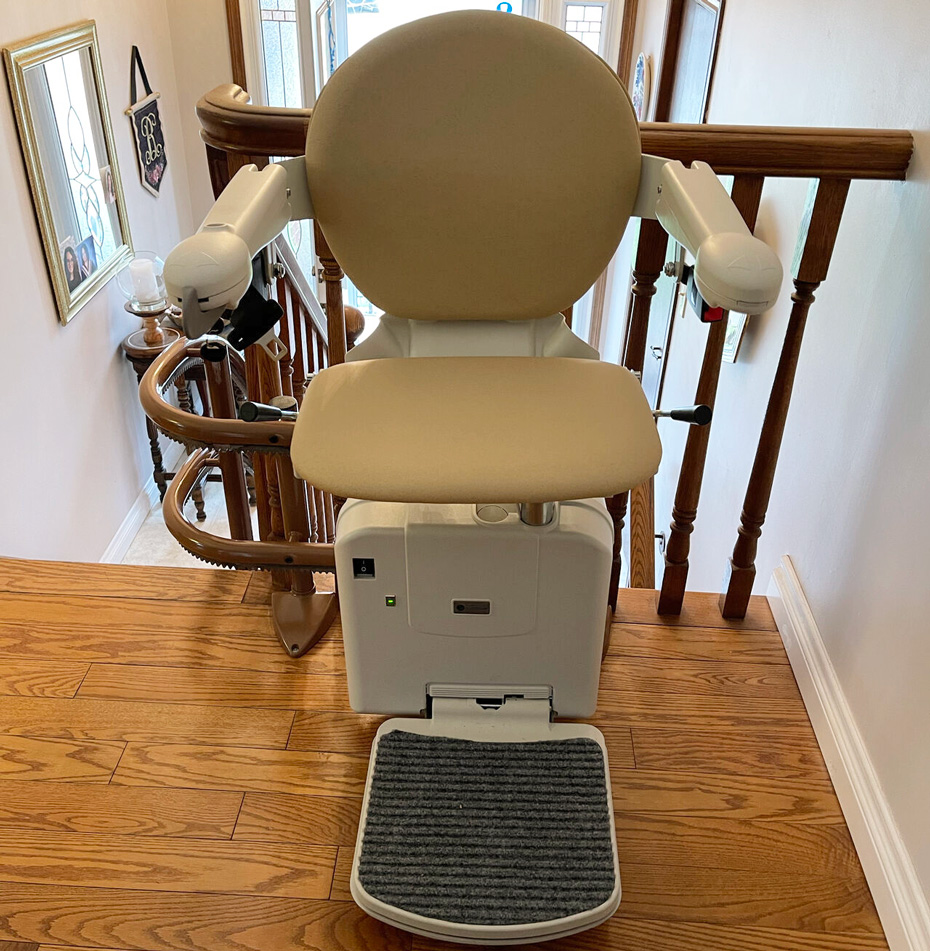
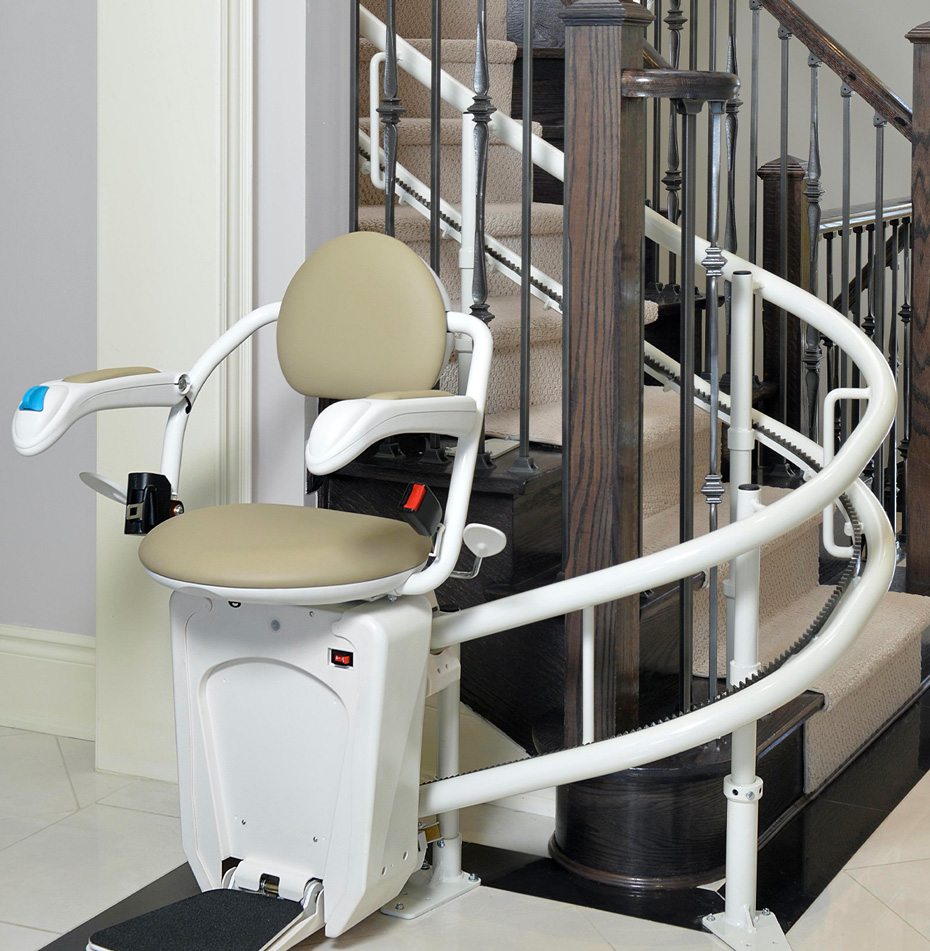
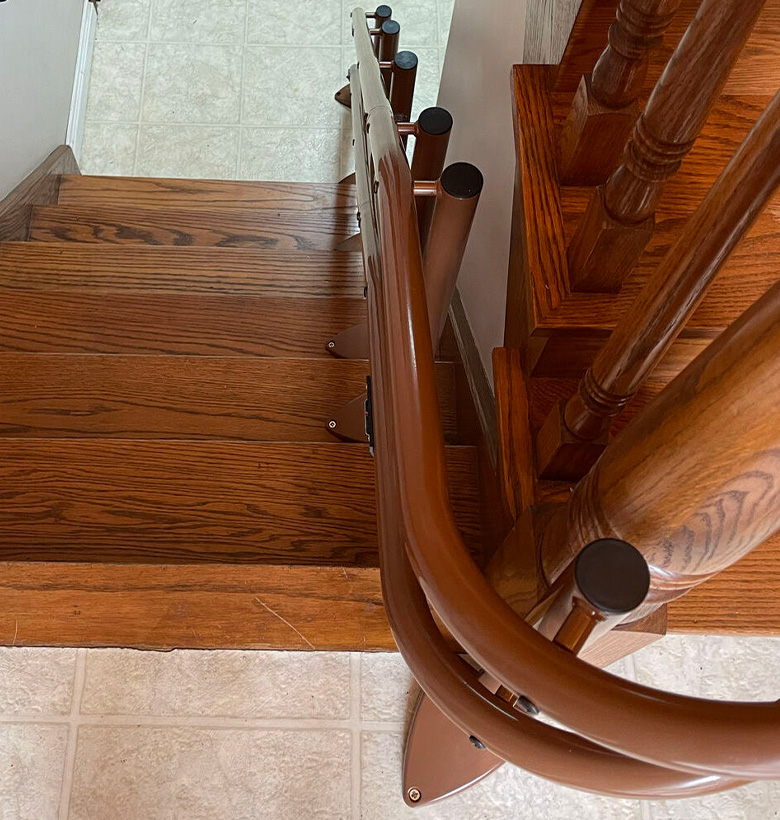
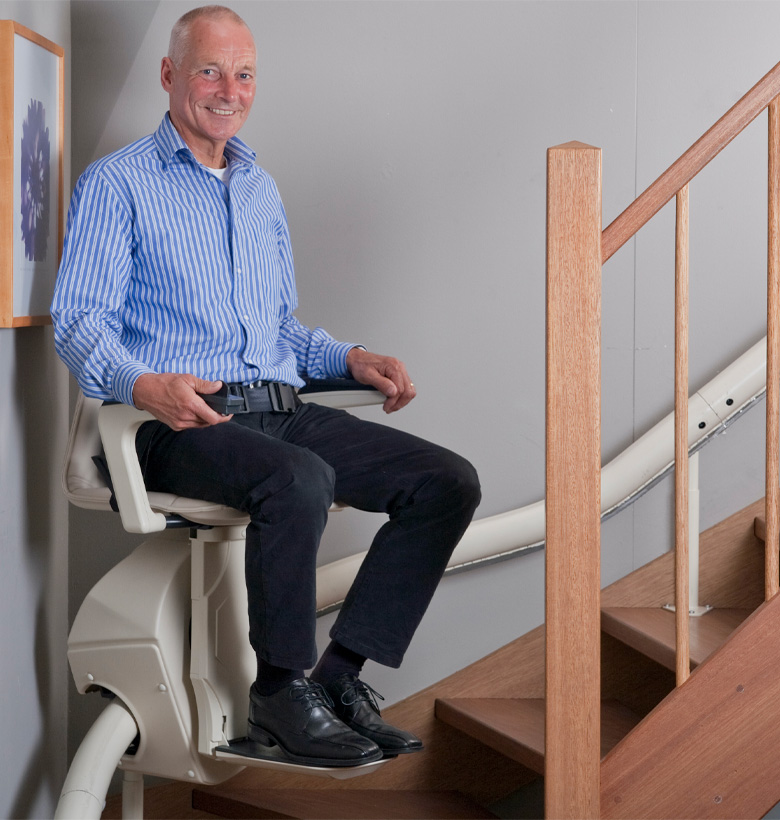
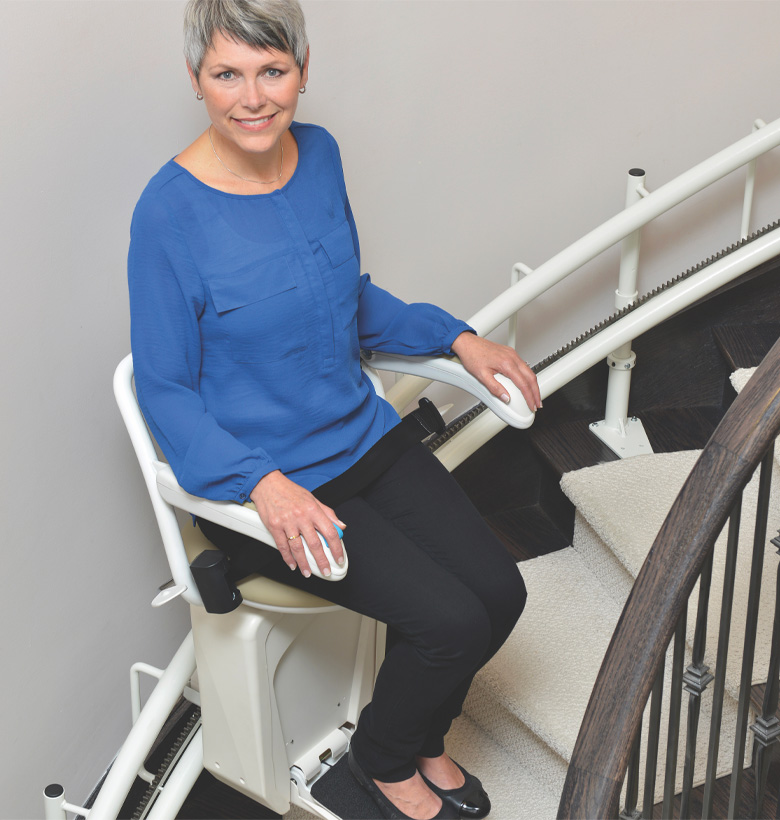
Founded in 1993 when the Internet was just starting to become important in day-to-day life, Silver Cross built its roots as relationship company. It formed partnerships with experienced dealers and installers of stair lifts, elevators and other mobility equipment in order to bridge the gap between the prospective customer and a pre-qualified, knowledgeable local dealer.